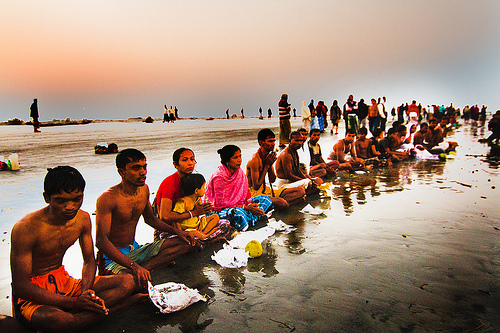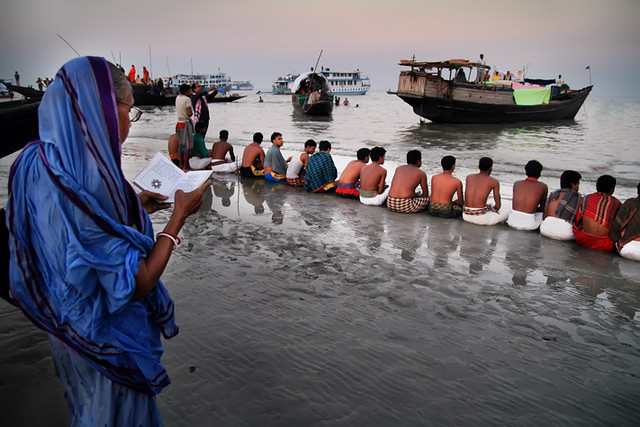Host-guest perceptions of community empowerment through Intangible Cultural Heritage (ICH) tourism: Insights from the Rash Mela festival in Bangladesh Sundarbans

Shahida Khanom, PhD
Affiliation Board Member, World Heritage Nomination at International Union for Conservation of Nature

Culture and tourism have always been inseparable. The emergence of cultural tourism as a social phenomenon and a subject of academic interest dates back to post-World War 2 leisure travel. But it is only recent decade that the relationship between culture and tourism has been identified as one form of consumption, which is defined as cultural tourism. Prior to the emergence of cultural tourism, visitation and recreation were mainly based on nature-based tourism, especially in the national protected areas. The investigation into tourism and natural protected areas is well established in scholarly publications. Visitors usually travel the protected areas to see the wild flora and fauna in their natural habitat to relax and learn about nature. Most of the national protected areas in the developing countries are traditionally managed by the local community. Visitors, particularly from Western countries visit the populated areas, usually interact with the local communities, and motivated to find the unique cultural heritage such as archaeological monuments or the daily life. A significant portion of the attraction of the cultural heritage is composed of intangible cultural heritage such as religious or spiritual practices, music, festival and traditional knowledge.
Recent studies identify that community empowerment is a crucial issue for the sustainable development of ICH tourism to engage the host in destination management. The tourism literature contains substantial discussion on the role of the ICH and empowerment, whilst seeking an option to balance between the two concepts for sustainable tourism. Although there is a body of knowledge exists on the sustainable tourism, but the practical implementation of this idea faces a number of difficulties particularly the empowerment. The major difficulties lie in the need for collaboration with all possible stakeholders to achieve their effective participation and commitment. In particular, it is emphasized that the empowerment must position the local community to control over the tourism project including planning and implementation for sustainable tourism. The common goal of the sustainable tourism is to conserve the ICH, which in turn benefits the environment for the social and cultural well-being of the community.

Recent research findings show that ICH tourism has the potential to empower the host community in economic, psychological, social, and political dimensions. The economic empowerment was evident through creating job opportunities and fair sharing of the benefits. The community feels pride about tradition and culture, which portray their psychological empowerment. Further, the social cohesion through improved internal collaboration builds social capital, which amplifies social empowerment. Eventually, the community enjoys good governance which enhances political empowerment. Nevertheless, the ICH particularly festival and events provide the uniqueness of the indigenous value that has linkage with the natural and built environment of a destination. Notably, it is acknowledged that any revenue generated from the well-managed festival triggers empowerment of the local community to ensure the sustainability of the festival.
The scholarly investigation of empowerment inquiry for the host perception of empowerment through the festival. The findings of the study stressed the host perception of empowerment in economic, psychological, social and political dimensions. The sustainability of the festival depends on the economic expenditure by the tourist, which enables the host economic empowerment to reinforce the value through participation. The economic empowerment is visible in the previous literature of community-based tourism which mainly considered local participation as a means of financial distribution and poverty alleviation. However, the recognition of the tourist of the host tradition is important to demonstrate host pride in tradition, especially in the isolated remote communities.
The Rush Mela Festival, as an ICH, encompasses elements of religious rituals, cultural functions, business in goods and services, tourism, and institutional engagements, which relate to these four dimensions of community empowerment. The findings suggest that most of the hosts and guests, regardless of religious background and the location of the festival (i.e., Dublar Char or Chila), emphasised the role of the festival for psychological empowerment of the community. The worship ceremony during the Rush Mela Festival is the main attraction for the Hindu community, both hosts and guests, who gain spiritual satisfaction through performing the rituals. Whereas, the Muslim hosts and guests perceive psychological satisfaction from the cultural programmes, observing the Hindu rituals, and enjoying the natural environment of the Sundarbans. Most of the hosts and guests recognize that, other than religious benefits, economic benefits give mental satisfaction to the host community. Thus, hosts and guests perceived the role of the Rush Mela in the psychological empowerment of the community.
The study also found that the Rush Mela Festival had a significant impact on the economic empowerment of the host community as perceived by most of the hosts and guests. The Rush Mela Festival provided economic opportunities to the local community and tour operators through business and employment, with some variations based on the place of the festival. In Chila, only local people were involved in the business activities of the festival. Also, the tour operators play an important role in economic empowerment by bringing tourists to the festival.
Regarding social empowerment, the study found that the Rush Mela Festival has played a significant role in establishing social harmony among the religious community through the worship of both Hindu Gods and Muslim legends. Muslims and Hindus actively participate in the organising committee to arrange the festival. The guests found this social harmony to be a unique feature of the Rush Mela Festival in this region. The exchange of goods and cultural traditions during the festival enhances social cohesion. Thus, the local community has become socially empowered through the Rush Mela Festival.
In addition, the political empowerment of the local community has been enhanced through organising the Rush Mela Festival. Most of the hosts perceived that the formation of the local organising committee was beneficial to the development of the festival. Also, the hosts now have the support of government agencies such as the Forest Department, the Police and the Rapid Action Battalion, and the local government offices, which have created opportunities for the local community to participate in decision-making. The guests also perceived the community benefited from political empowerment, as the organising committee ensured arrangements and security for the tourists. Both host and guest suggested the inclusion of representatives from the wider community to enhance political empowerment. Overall, the study finds that the traditional Rush Mela Festival, being organised by the local community over the past years, has contributed to community empowerment. The festival has an influence on the local economy, social stability, psychological enrichment, and political empowerment.
Dr. Shahida Khanom
Board Member
World Heritage Nomination
International Union for Conservation of Nature (IUCN)
